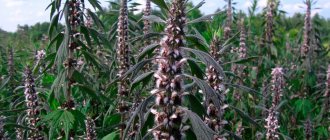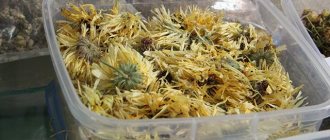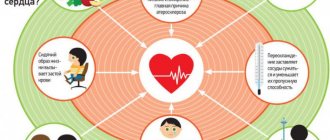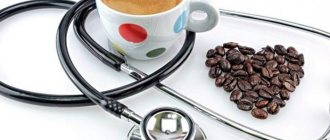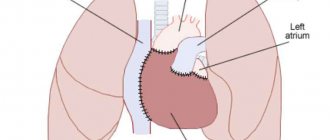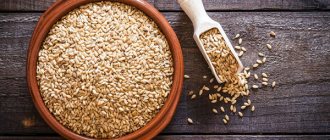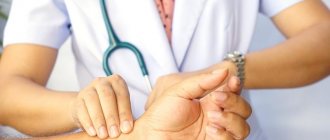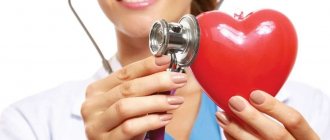Under ideal conditions, a person’s heart would not stop suddenly, abruptly, due to illness, long before old age. Studies of centenarians in different countries show that, of all the body organs, the heart should be one of the last to fail.
Science has proven that its safety margin can last at least 120 years.
In fact, this ingenious pump with its blood supply, nerves, and electrical potential fails before reaching half of the time programmed by nature.
How to strengthen the heart muscle in the real world, full of temptations, cheeseburgers and cakes, computer games and television series, beautiful cars? We tried to collect practical advice and present scientific findings in accessible language.
What are the main “enemies” of the heart you will have to fight?
Knowing the enemy by sight makes it easier to deal with him. The most significant factors damaging the myocardium of the heart are:
- accumulation of excess weight;
- high cholesterol (low-density lipoprotein);
- hypertension;
- chronic inflammation;
- metabolic disorders;
- stress.
In theory, strengthening your heart muscle by adopting a healthy lifestyle is simple. This means:
- smile rather than get angry when faced with troubles;
- eat an apple, not an apple pie;
- drink green tea while watching news on TV, and not eat chips;
- in the morning, while waiting for the kettle to boil, spend 5 minutes doing stretching exercises;
- try to meditate for those few seconds while the computer boots.
Let's combine theoretical knowledge with practical actions.
Literature:
- Konradi A.O., Nedoshivin A.O. Angiotensin II and COVID-19: secrets of interactions. - Russian Journal of Cardiology, 2021. - 25(4).
- Yavelov I.S. and cardiovascular diseases. — International Journal of Heart and Vascular Diseases. — September, 2021
- Kozlov I.A., Tyurin A.N. Cardiovascular complications of COVID-19. — Bulletin of anesthesiology and resuscitation. — Volume 17, No. 4, 2020.
- Vorobyova A.V., Lastochkin O.V. Pathomorphological changes in organs during COVID-19. — Infection and immunity. — T.10, No. 3, 2020.
The text was checked by expert doctors: Head of the socio-psychological service of the Alkoklinik MC, psychologist Yu.P. Baranova, L.A. Serova, a psychiatrist-narcologist.
CAN'T FIND THE ANSWER?
Consult a specialist
Or call: +7 (495) 798-30-80
Call! We work around the clock!
What to do with accumulated fat?
Protruding bellies and folds at the waist do not just disturb the figure. These formations have become dangerous due to internal (visceral) fat. It sharply increases the risk of hypertension, thrombus formation in the vessels of the heart, and reduces the effect of insulin. It is from this type of fat that the liver synthesizes low-density lipoproteins, hormones that stimulate appetite.
Scientists now equate the harms of obesity to exposure to tobacco toxins
An excess in the diet of foods consisting of sugars, starch, white flour, polished rice, and potatoes does not contribute to a strengthening effect on the heart muscle.
To protect your heart, you should avoid the following foods:
- saturated fat in cream, sour cream, lard, ice cream;
- trans fats in margarine, chips, semi-finished products;
- fatty meat;
- culinary dough products;
- strong coffee;
- white flour loaves.
Healthy foods that help the heart include:
- zucchini, bananas, apricots, raisins, legumes - rich in potassium (prevent arrhythmias);
- porridges - oatmeal, buckwheat, nuts, seafood, watermelons - contain magnesium, which is necessary for the contraction of myofibrils;
- cabbage, beets, cottage cheese, seaweed - contain iodine, which prevents an increase in cholesterol levels;
- sweet peppers, oranges, black currants, raspberries, apples - are filled with a complex of vitamins that ensure the synthesis of energy in the cells of the heart muscle;
- vegetable oils can completely replace animal fats;
- fish at least twice a week - helps delay the process of deposition of atherosclerotic plaques in the coronary vessels;
- green tea, fresh juices, low-fat yogurt are drinks that not only replace coffee, but also strengthen digestion.
It is necessary to take into account that you cannot get rid of visceral fat by diet alone; in combination with physical exercise, you can quietly lose up to 10% of the accumulated fat in six months.
Causes of cardiovascular pathology after coronavirus
Initially, it was assumed that Covid exclusively affects lung tissue, and that numerous associated complications are only a consequence of hypoxia and a severe inflammatory process. However, as the pathogenesis of SARS-CoV-2 was studied, it was proven that the spread of the virus in the body occurs due to the interaction of the virion with angiotensin-converting enzyme type 2 (abbreviated as ACE2 or ACE2) - a membrane protein that is present in almost all tissues of the body.
By binding to ACE2, the causative agent of the new coronavirus infection irreversibly disrupts the vital activity and, as a result, the functions of certain cells, which explains the variability of the clinical picture of the disease:
- temporary lack of sense of smell due to damage to the nervous system, it is assumed that COVID-19 is the cause of depression and obsessive thoughts of suicide;
- specific pneumonia, which is usually not detected by radiography, but the “classic” “ground glass” pattern is clearly visible on the tomogram;
- diarrhea and nausea due to damage to the mucous membrane of the digestive tract;
- pyelonephritis, exacerbation or manifestation of glomerulonephritis with pathological changes in renal tissue, etc.
Receptors sensitive to SARS-CoV-2 are also found in the vascular endothelium. The virus has a direct damaging effect on blood vessels, which provokes:
- the formation of atherosclerotic plaques, which is especially dangerous against the background of impaired rheological properties of blood and a tendency to thrombosis;
- autoimmune inflammatory process;
- impaired vasodilation, increased tone of the vascular wall and, accordingly, hypertension (up to a critical level).
This is dangerous for a healthy person, but the risk of fatal complications is especially high in such cases:
- elderly age;
- male gender (experts believe that in men the concentration of ACE2 in tissues is higher);
- concomitant cardiovascular diseases (experts are still arguing about the safety of using some antihypertensive and antiarrhythmic drugs with a confirmed diagnosis of covid);
- overweight;
- diabetes;
- concomitant autoimmune diseases.
In addition, some drugs used for treatment also have a cardiotoxic effect. Doctors are well aware of the risk of side effects, but such drugs are prescribed in cases where the potential benefits clearly outweigh the possible adverse reactions.
What are the benefits of fighting cholesterol?
Let's not blame cholesterol for all the sins of the heart. This is an important plastic material for restoring heart cells and replacing old ones with young ones. Scientists have divided it into fractions and found that low-density lipoproteins are dangerous, and high-density fats are even beneficial.
In addition to the heart diet that we have already reported on, drugs called statins play a significant role. Disputes over their appropriateness and negative effects have led to a recommendation: to prescribe only in cases where the elevated lipoprotein levels have not been reduced with the help of a two-month diet.
The optimal result is obtained through the combined effects of physical training, quitting smoking, and proper nutrition.
Diagnosis and risk assessment of cardiovascular disorders
Normalization of temperature and saturation, improvement in general well-being, reduction in cough intensity, as well as a negative test for COVID-19 are not a reason to refuse further medical supervision. To determine the tactics of therapeutic vascular restoration after coronavirus, the patient is recommended to undergo the following examinations:
- clinical blood test, coagulogram, lipidogram;
- ECG, EchoCG;
- Dopplerography of coronary vessels;
- angiography;
- If necessary, 24-hour blood pressure monitoring is indicated.
Hypertension is enemy number 3
High blood pressure causes intense internal pressure on the walls of blood vessels. It practically “presses” atherosclerotic plaques into the thin inner lining. At the same time, resistance and load on the heart increase, but nutrition deteriorates.
Strengthening the heart muscle is impossible under conditions of constant hard work.
Hypertension is called the “asymptomatic killer” because it leads to deaths in 75% of cases in acute heart attack and stroke.
If there is even a temporary increase in blood pressure due to anxiety, you should consult a doctor to select the most effective medications. Currently, there are enough combination drugs that lower blood pressure that can be taken once a day.
You will have to limit the amount of salt, hot sauces, and liquids in your diet. Hypertension is one of the diseases for which doctors not only do not prohibit, but even advise, in addition to medications, to be treated with folk remedies.
It is necessary to avoid the additional stress on the heart and blood vessels associated with smoking and taking a steam bath.
The most common cardiovascular complications after coronavirus
- Arrhythmia. In addition to the direct cardiotoxic effect of COVID-19, cardiac arrhythmias are also caused by hyperthermia, electrolyte and metabolic disorders, and hypoxia. According to statistics, even with a mild course of the pathology, arrhythmia is noted in 14% of patients; in hospitalized patients this figure is about 55–60%.
- Myocarditis and other myocardial pathologies caused by prolonged ischemia, damage to the heart muscle by cytokines released during inflammation, and impaired microcirculation.
- Heart failure. The development of this syndrome is a predictor of severe viral disease and a strict indication for hospitalization.
- Acute myocardial infarction due to increased blood viscosity, thrombus formation, and vascular damage. The danger of an attack remains even after discharge from the hospital and relief of the main symptoms of the pathology.
What kind of inflammation do we constantly face?
Inflammation of the heart muscle occurs under the influence of microorganisms during infectious diseases. You should not hope that weakness after the flu or ARVI will pass without consequences. During this period, an inflammatory reaction occurs in and around the heart cells. Even when good health is restored after some time, instead of muscle elements, scars appear on the heart, which means that the contraction mechanism is disrupted. When the lesions are localized in the area of the conduction pathways, heart blockades and arrhythmias are possible.
Information about the types of myocarditis can be found in this article.
The modern interpretation of the pathogenesis of atherosclerosis emphasizes the primary effect of herpes and influenza viruses on the inner wall of the coronary arteries of the heart. Only in the membrane destroyed by inflammation are fatty inclusions deposited.
Another option is an abnormal allergic reaction of blood vessels in the presence of such chronic diseases:
- bronchial asthma,
- multiple sclerosis,
- Crohn's disease,
- rheumatoid polyarthritis.
It turns out that the following can “trigger” an allergic reaction in the heart and blood vessels:
- substances secreted by visceral fat;
- oxidized low-density lipoproteins;
- stress (through increased synthesis of adrenaline);
- trans fats in foods (prevent the body from producing anti-inflammatory agents);
- lack of vegetables and fruits containing antioxidants in the menu.
This indicates the connection between all the “enemies” of the heart that we have cited and requires a fight against not just one, but all causes.
Trans fats enter the body with these products.
Eat more fiber
For most people, the biggest problem with nutrition is that it is quite difficult to plan out your diet and fill it with all the necessary ingredients. One of the most important of these ingredients is fiber.
Soluble fiber —the type found in oat bran, barley, nuts and seeds, beans, lentils, peas, and some fruits and vegetables—is associated with heart health because it helps lower blood cholesterol levels. Fiber also helps you feel full, making you less likely to overeat.
Women should aim for at least 20 grams of fiber per day, and men should get nearly twice as much, with an emphasis on plant-based foods rich in soluble fiber.
How to avoid metabolic disorders and stress?
Doctors talk about metabolic syndrome, which causes excess insulin levels. Its consequences affect early atherosclerosis and malnutrition of the heart muscle.
Most people do not even know about their problem, since diagnosing the disease is difficult. We learn about it years later, when there is already myocardial damage and heart disease.
The connection between altered metabolism in the heart and obesity and physical inactivity has been proven. Therefore, in the long term, the fight against excess fat and daily physical training will help solve the problem.
The stress reaction is initially designed to protect a person, to prepare the muscles and heart for an attack by the enemy. But in the age of “sedentary illness” it turned out to be unnecessary and excessive. With the simultaneous effect of other risk factors, stress only increases the negative impact on the heart.
Psychologists do not advise trying to influence a difficult life situation. It is much healthier for the heart to change your attitude towards the troubles that have arisen and try to be distracted by more pleasant things. Once you master yoga, you can relax in a few seconds.
Exercises to strengthen the heart do not require much time; they can be performed at home, on the way to work, or during your lunch break.
Content:
- Causes of cardiovascular pathology after coronavirus
- The most common cardiovascular complications after coronavirus
- Diagnosis and risk assessment of cardiovascular disorders
- How to restore blood vessels after coronavirus 4.1. Physiotherapeutic restoration of blood vessels after coronavirus 4.2. Diet 4.3. Medicinal restoration of blood vessels after coronavirus
To date, specialists have been able to partially systematize information about methods of transmission, features of the course of coronavirus infection, and risk factors for the development of severe, life-threatening symptoms. However, as data accumulated on the principles of treatment of COVID-19, doctors drew attention to numerous complications of the disease, the so-called post-Covid syndrome, which is often more severe than the viral infection itself. In addition to shortness of breath, hypoxia, and neurological disorders, there are multiple cardiovascular disorders that can significantly limit a person’s daily and professional life.
Recommendations for the use of physical activity
Tips for quietly increasing exercise on your heart and relieving stress:
- walk to work or park your car away from the office;
- do not use the elevator;
- if you want to chat with colleagues, walk along the corridor;
- feel free to sing along when you hear pleasant music;
- walk in the evening in any weather;
- When watching TV, sit less in a chair, do stretching exercises, bending to the sides;
- take a contrast shower in the morning and a warm one in the evening;
- use weekends for cycling and hiking;
- visit the swimming pool and fitness club.
Special Pilates exercises on balls strengthen the heart and blood vessels and burn fat.
For those who intend to seriously increase the load on the heart through regular training in fitness centers, the following rules must be followed:
- start not with strength training, but with static types of exercise (Pilates, callanetics, Pilates ball);
- monitor your pulse and well-being, do exercises at your own pace;
- It is enough to study for an hour twice a week;
- after 2–3 months, you can choose the appropriate option for strength exercises;
- You should not combine training days with fasting in your diet;
- do not get carried away with dietary supplements and tonic cocktails;
- Before you start regular exercise, check your heart using available methods (ECG, ultrasound).
Stages of treatment of myocardial infarction
- At the prehospital stage, if there are symptoms of the disease, the patient is given first aid and transported to the clinic.
- The hospital stage involves carrying out medical measures aimed at maintaining body functions and combating negative consequences.
- The rehabilitation stage is carried out in sanatoriums where special conditions have been created.
- At the stage of dispensary observation and outpatient treatment, the patient periodically visits the cardiology clinic and the doctor at his place of residence.
The high professionalism of doctors and the technical equipment of the clinic where you are being treated after a myocardial infarction are extremely important. With qualified specialists and high-quality rehabilitation, you will avoid complications and continue to live a full life.
Drugs that help strengthen the heart muscle
There are medications that can restore metabolism in weakened heart cells and replenish the supply of vitamins and essential electrolytes.
It should be noted that from the point of view of evidence-based medicine, they do not correspond to the modern level of effectiveness. But practice shows that after a course of use a person experiences positive changes.
Such means include:
- Riboxin,
- Cocarboxylase,
- Asparkam and Panangin.
Is it possible to drink alcohol?
Smoking and alcohol negatively affect the entire body. It has been proven that smokers are more likely to experience various disorders in the functioning of the cardiovascular system. When it comes to alcohol, experts are more loyal.
Natural red wine is considered the most beneficial for the heart. Due to the content of antioxidants and bioflavonoids, when consumed in moderation, it has a positive effect on the body. The key condition for this effect is moderation. To stay healthy, you can drink no more than 1-2 glasses of a good quality drink. The safe daily amount of alcohol, according to WHO, is no more than 30 ml in terms of alcohol for men and no more than 20 ml for women.
If you can't give up alcohol, it's important to keep your habits under control.
Sources
- Chen W., Bian W., Zhou Y., Zhang J. Cardiac Fibroblasts and Myocardial Regeneration. // Front Bioeng Biotechnol - 2021 - Vol9 - NNULL - p.599928; PMID:33842440
- Deng M., Chen W., Wang H., Wang Y., Zhou W., Yu T. The disappearance of IPO in myocardium of diabetes mellitus rats is associated with the increase of succinate dehydrogenase-flavin protein. // BMC Cardiovasc Disord - 2021 - Vol21 - N1 - p.142; PMID:33731005
- Ikeda G., Santoso MR., Tada Y., Li AM., Vaskova E., Jung JH., O'Brien C., Egan E., Ye J., Yang PC. Mitochondria-Rich Extracellular Vesicles From Autologous Stem Cell-Derived Cardiomyocytes Restore Energetics of Ischemic Myocardium. // J Am Coll Cardiol - 2021 - Vol77 - N8 - p.1073-1088; PMID:33632482
- Villa Del Campo C., Liaw NY., Gunadasa-Rohling M., Matthaei M., Braga L., Kennedy T., Salinas G., Voigt N., Giacca M., Zimmermann WH., Riley PR. Regenerative potential of epicardium-derived extracellular vesicles is mediated by conserved miRNA transfer. // Cardiovasc Res - 2021 - Vol - NNULL - p.; PMID:33599250
- Alagarsamy KN., Mathan S., Yan W., Rafieerad A., Sekaran S., Manego H., Dhingra S. Carbon nanomaterials for cardiovascular theranostics: Promises and challenges. // Bioact Mater - 2021 - Vol6 - N8 - p.2261-2280; PMID:33553814
- Liu X., De la Cruz E., Gu X., Balint L., Oxendine-Burns M., Terrones T., Ma W., Kuo HH., Lantz C., Bansal T., Thorp E., Burridge P ., Jakus Z., Herz J., Cleaver O., Torres M., Oliver G. Lymphoangiocrine signals promote cardiac growth and repair. // Nature - 2021 - Vol588 - N7839 - p.705-711; PMID:33299187
- Stępniewski J., Tomczyk M., Andrysiak K., Kraszewska I., Martyniak A., Langrzyk A., Kulik K., Wiśniewska E., Jeż M., Florczyk-Soluch U., Polak K., Podkalicka P., Kachamakova-Trojanowska N., Józkowicz A., Jaźwa-Kusior A., Dulak J. Human Induced Pluripotent Stem Cell-Derived Cardiomyocytes, in Contrast to Adipose Tissue-Derived Stromal Cells, Efficiently Improve Heart Function in Murine Model of Myocardial Infarction. // Biomedicines - 2021 - Vol8 - N12 - p.; PMID:33297443
- Xu D., McBride E., Kalra K., Wong K., Guyton RA., Sarin EL., Padala M. Undersizing mitral annuloplasty alters left ventricular mechanics in a swine model of ischemic mitral regurgitation. // J Thorac Cardiovasc Surg - 2021 - Vol - NNULL - p.; PMID:33288234
- Regard S., Rosa D., Suppan M., Giangaspero C., Larribau R., Niquille M., Sarasin F., Suppan L. Evolution of Bystander Intention to Perform Resuscitation Since Last Training: Web-Based Survey. // JMIR Form Res - 2021 - Vol4 - N11 - p.e24798; PMID:33252342
- Ruan Y., Zeng J., Jin Q., Chu M., Ji K., Wang Z., Li L. Endoplasmic reticulum stress serves an important role in cardiac ischemia/reperfusion injury (Review). // Exp Ther Med - 2021 - Vol20 - N6 - p.268; PMID:33199993
Myocardial infarction: rehabilitation and life after an attack
At the rehabilitation stage, it is important to gradually expand the patient’s activity. For this purpose, professional cardiology clinics and sanatoriums use modern programs aimed at preventing and treating muscle atrophy and pulmonary congestion. They include physical therapy and physiotherapy.
Life after a myocardial infarction does not end at all if the patient is offered a competent and effective rehabilitation program. In some cases, the patient will have to change his job if it involves physical or emotional stress.


